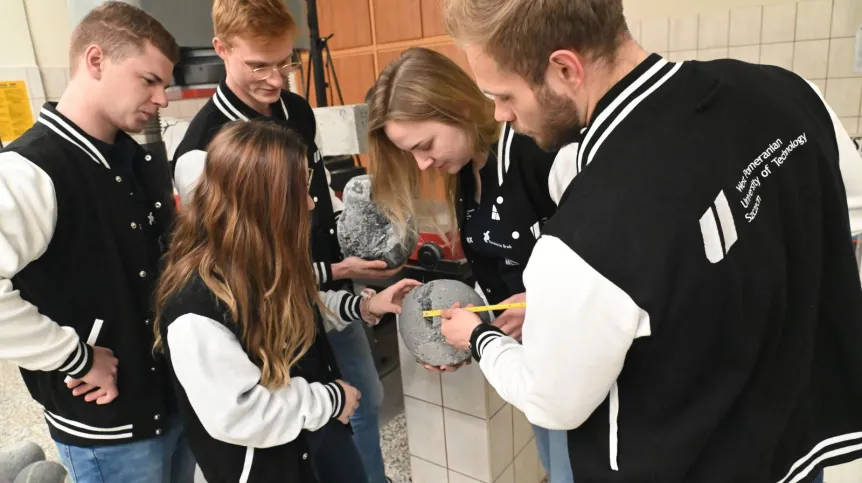
A concrete bowling ball designed by students of the West Pomeranian University of Technology in Szczecin won a prestigious competition during the convention of the American Concrete Institute. The team from Szczecin defeated competitors from all over the world.
“It was a sensation. Our students defeated 33 other teams - from the United States, Canada, South America, Taiwan, India. We were the only participants from Europe, and we are the only ACI Student Chapter in this part of the world,” said the head of the Department Reinforced Concrete Structures and Concrete Technology of the West Pomeranian University of Technology in Szczecin, Professor Maria Kaszyńska.
She added that the American Concrete Institute (ACI) is an institution that sets construction standards, a counterpart of the Polish Committee for Standardization. The convention, held twice a year, is accompanied by a competition for students - this time, the challenge in the FRC Bowling Ball Competition was to design and construct a bowling ball made of a special fibre-reinforced concrete mix.
Kaszyńska said: “The balls had to meet very difficult criteria, including weight, dimensions, and method of destruction. We were working on them even before the pandemic.
“The balls had to be weighed and measured by a committee, and then they were dropped on a special structure so that they could knock down pins by rolling along the lane - like in a typical game. Points in the competition were awarded for the mixture recipe and scientific study, for the appropriate weight of the ball (5.5 kg), its diameter (200mm), as well as the number of pins knocked down and the strength test.
“The biggest challenge was to create a ball that would roll in a straight line, with the right centre of gravity, and to obtain the best durability results in the destruction test.”
Dr. Norbert Olczyk explained that the team prepared full balls, made entirely of concrete mix, poured into special, previously designed, 3D printed moulds.
He said: “The given geometry of the ball challenged us to design a mixture with the specific weight of 1,300 kg/m3, while the weight of ordinary concrete is estimated at 2,400 kg/m3. Over the last two months, we have made about 120 balls.”
Winning students Karolina Iwańska and Janusz Kozanecki joked: “The organizers remembered us thanks to our charisma; we were probably among of the loudest teams, but in a positive sense.”
Iwańska added: “We were the last to start, so having a picture of the whole situation, after a lot of laboratory tests, we knew that we had to succeed.”
The students mentioned that before the competition they had different ideas about the other teams, and they knew that many of them had already participated in such competitions. They pointed out that preparations for the competition required them to work long hours outside of their regular studies.
Kozanecki said: “The last three months were particularly difficult - we were in the laboratory every day, including weekends. When no one else from the team could show up, we tried to come alone to do something with the balls.”
The awarded team members were Julia Błaż, Karolina Iwańska, Malwina Kułaga, Karol Czyżyk, Adam Kamiński, Janusz Kozanecki and Aleksander Łuczak from the Faculty of Civil and Environmental Engineering of the West Pomeranian University of Technology in Szczecin.
The students received a thousand dollars prize, statuettes and certificates. The trip of the ACI Student Chapter team from Szczecin to the competition was co-financed by sponsors - construction companies. (PAP)
PAP - Science in Poland, Elżbieta Bielecka
emb/ zan/ kap/
tr. RL













